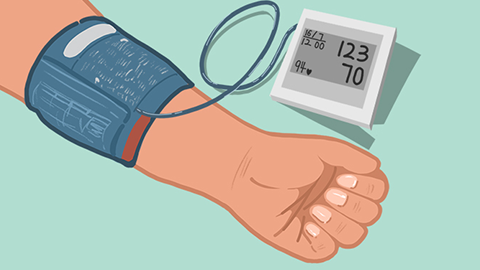What to Eat to Lower Blood Pressure
Generally, foods such as celery, bananas, oats, black fungus, and garlic can be selected to help manage hypertension. Additionally, antihypertensive medications such as amlodipine maleate tablets, metoprolol tartrate tablets, hydrochlorothiazide tablets, nifedipine controlled-release tablets, and captopril tablets may also be taken under a doctor's instructions. Detailed explanations are as follows:

I. Foods
1. Celery
Celery is rich in potassium, which promotes the excretion of sodium and helps maintain the balance of sodium and potassium in the body, thereby reducing blood pressure elevation caused by sodium and water retention. Moreover, celery contains bioactive components such as apigenin, which can dilate vascular smooth muscle, reduce vascular resistance, and thus lower blood pressure.
2. Banana
Bananas are rich in potassium, which can stabilize sodium-induced hypertension. In addition, bananas also contain fiber and antioxidants, which help improve cardiovascular health.
3. Oats
Oats are rich in beta-glucan, a soluble dietary fiber that forms a viscous substance in the intestines, hindering cholesterol absorption, lowering blood cholesterol levels, reducing the occurrence of atherosclerosis, and thus positively influencing blood pressure control. Meanwhile, minerals such as magnesium and potassium in oats also help regulate blood pressure.
4. Black Fungus
Black fungus contains components such as polysaccharides that have anticoagulant properties, inhibit platelet aggregation, and lower blood lipids, improving blood viscosity, reducing the risk of thrombosis, and helping maintain vascular patency, thus assisting in lowering blood pressure.
5. Garlic
Garlic contains sugars, proteins, fats, vitamins A, B, C, and various trace elements. It has effects of relieving cough, alleviating asthma, and promoting diuresis, making it a commonly used food in treating hypertension.
II. Medications
1. Amlodipine Maleate Tablets
Amlodipine tablets are calcium channel blockers that act on calcium channels in vascular smooth muscle cell membranes, preventing calcium ion influx, relaxing vascular smooth muscle, and reducing peripheral vascular resistance to achieve a sustained and stable reduction in blood pressure.
2. Metoprolol Tartrate Tablets
This medication is a beta-blocker that reduces heart rate and myocardial contractility by blocking cardiac β1 receptors, lowering cardiac output. It also inhibits renin release, reducing angiotensin II production, thus lowering blood pressure.
3. Hydrochlorothiazide Tablets
Hydrochlorothiazide tablets belong to thiazide diuretics, primarily acting on the proximal portion of the distal convoluted tubule, inhibiting the reabsorption of sodium chloride and water, increasing urine output, reducing blood volume, decreasing cardiac preload, and thereby lowering blood pressure. Long-term use can also reduce vascular smooth muscle sensitivity to vasoconstrictive substances.
4. Nifedipine Controlled-Release Tablets
Nifedipine controlled-release tablets are calcium channel blockers that inhibit the entry of extracellular calcium ions into vascular smooth muscle cells through voltage-dependent L-type calcium channels, weakening excitation-contraction coupling, reducing the contractile responsiveness of resistance vessels, causing vasodilation, lowering peripheral resistance, and thus reducing blood pressure.
5. Captopril Tablets
Captopril tablets are angiotensin-converting enzyme inhibitors that inhibit angiotensin-converting enzyme activity, reducing angiotensin II production and weakening its vasoconstrictive effects. They also reduce aldosterone secretion, leading to increased excretion of sodium and water and reduced blood volume, ultimately achieving a blood pressure-lowering effect.
In daily life, blood pressure can be controlled through regular exercise, maintaining a healthy weight, limiting salt and alcohol intake, quitting smoking, and adopting other healthy lifestyle habits. Additionally, before taking any medication, please consult a doctor or pharmacist to ensure the safety and effectiveness of the medication.






